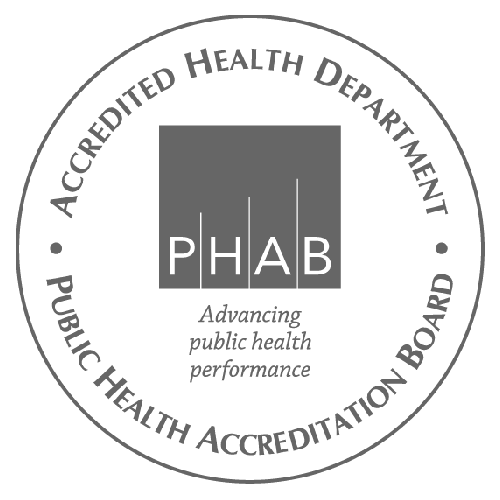You have the power to help stop bullying.
Creating school environments that are free of bullying requires everyone to understand that bullying is unacceptable, harmful, and preventable.
Continue below to change the culture and help put an end to bullying.
Home

Only 20-30%
of students who are bullied tell adults or authorities. That leaves the vast majority of children who believe they have no one to turn to and are left to suffer alone.
STEP 1
Define
Bullying is repeated, unwanted, hurtful behavior, where a person or group is stronger or holds some sort of power over the person being bullied. This behavior is physical, psychological, social, or educational and inflicts harm or distress on the target.
Types of Behavior
- Pushing.
- Hitting.
- Kicking.
- Holding down.
- Name-calling.
- Taking or breaking belongings.
- Excluding from activities.
Types of Power
- More money.
- More friends.
- Higher position.
___
Signs a Child is
Being Bullied
Being Bullied
STEP 2
Recognize
Signs a Child is
Bullying Others
Bullying Others
Signs a Child is Being Bullied
- Unexplainable injuries.
- Frequent headaches or stomach aches, feeling sick or faking illness.
- Changes in eating habits, like suddenly skipping meals or binge eating. Youth may come home from school hungry because they did not eat lunch.
- Difficulty sleeping or frequent nightmares.
- More signs.
Signs a Child is Bullying Others
- Get into physical or verbal fights.
- Have friends who bully others.
- Are increasingly aggressive.
- Get sent to the principal's office or detention frequently.
- Have unexplained extra money or new belongings.
- More signs.
___
What Young People Can
Do When They See
Bullying
Do When They See
Bullying
When to Get Police
Help or Medical Attention
Immediately
Help or Medical Attention
Immediately
STEP 3
Act
What Schools Can
Do When They See
Bullying
Do When They See
Bullying
What Young People Can Do When They See Bullying
- Don’t join in or watch bullying.
- Stop any rumors.
- Stand up for the person.
- Tell an adult.
- Encourage the bullied person to talk to an adult.
- Offer support.
- More ways to act.
When to Get Police Help or Medical Attention Immediately
Get police help or medical attention immediately if:
- A weapon is involved.
- There are threats of serious physical injury.
- There are threats of hate-motivated violence, such as racism or homophobia.
- There is serious bodily harm.
- There is sexual abuse.
- Anyone is accused of an illegal act, such as robbery or extortion—using force to get money, property, or services.
What Schools Can Do When They See Bullying
Do
- Intervene immediately. It is ok to get another adult to help.
- Separate the youth involved.
- Make sure everyone is safe.
- Meet any immediate medical or mental health needs.
- Stay calm. Reassure the youth involved, including bystanders.
- Model respectful behavior when you intervene.
Don't
- Don’t tell students that bullying isn’t a big deal.
- Don’t immediately try to sort out the facts.
- Don’t force other youth to say publicly what they saw.
- Don’t question the young people involved in front of others.
- Don’t talk to the young people involved together, only separately.
- Don’t make the youth involved apologize or patch up relations on the spot.
___
Get All the Facts from
Those Involved
Those Involved
Support the Student(s)
Involved
Involved
STEP 4
Discuss
Address the Bullying
Behavior
Behavior
Follow
Up
Up
Get All the Facts from Those Involved
- Keep all the involved young people separate.
- Get the story from several sources, both adults and youth.
- Listen without blaming or determining “who started it.
- Don’t call the act “bullying” while you are trying to understand what happened.
- Determine if it's bullying
- To determine if this is bullying or something else, consider the following questions:
- What is the history between the youth involved? Have there been past conflicts?
- Is there a power imbalance? Remember that a power imbalance is not limited to physical strength. It is sometimes not easily recognized.
- Has this happened before? Is the young person worried it will happen again?
- Have the young people dated? There are special responses for teen dating violence.
- Are any of the youth involved with a gang? There are special responses for gang related violence
- To determine if this is bullying or something else, consider the following questions:
- Make sure to review your school policy which may have additional guidelines for defining bullying behavior.
Support the Student(s) Involved
- Once you have determined if the situation is bullying, support the student(s) involved.
- Listen and focus on the student. Learn what’s been going on and show you want to help.
- Assure the student that bullying is not their fault.
- Know that youth who are bullied may struggle with talking about it. Consider referring them to a school counselor, psychologist, or other mental health services.
- Give advice about what to do. This may involve role-playing and thinking through how the child might react if the bullying occurs again.
- Develop a game plan by working together with the child, parents, and school or organization to resolve the situation and protect the bullied child.
- Avoid these mistakes:
- Never tell the student to ignore the bullying.
- Do not blame the student for being bullied. Even if he or she provoked the bullying, no one deserves to be bullied.
- Do not tell the child to physically fight back against the student who is bullying. It could get the child hurt, suspended, or expelled.
- Never single out the young person who is bullied by changing only their routine to make them feel safer.
- Parents should resist the urge to contact the other parents involved. It may make matters worse. School or other officials can act as mediators between parents.
- Follow-up. Show a commitment to making bullying stop. Because bullying is behavior that repeats or has the potential to be repeated, it takes consistent effort to ensure that it stops.
Address the Bullying Behavior
- Parents, school staff, and organizations all have a role to play.
- Provide opportunities for the student to learn positive relationship skills.
- Show students that bullying is taken seriously. Calmly tell the youth that bullying will not be tolerated. Model respectful behavior when addressing the problem.
- Work with the young person to understand some of the reasons he or she bullied. For example:
- Sometimes children bully to fit in. Involvement in positive activities such as sports and clubs can enable them to take leadership roles and make friends without feeling the need to bully.
- Other times youth act out because something else—issues at home, abuse, stress—is going on in their lives. They also may have been bullied. These youth may be in need of additional support, such as mental health services.
- Using consequences that involve learning or building empathy can help prevent future bullying. Remember to follow the guidelines in their student code of conduct and other policies in developing consequences and assigning discipline. The student who bullied can:
- Write a story about the effects of bullying or benefits of teamwork.
- Role-play a scenario or make a presentation about the importance of respecting others.
- Do a project about civil rights and bullying.
- Make posters for the school about cyberbullying and being smart online.
- Lead a class discussion about how to be a good friend.
- Read a book about bullying.
- Make posters for the school about cyberbullying and being smart online.
Follow Up
- Follow up. After the bullying issue is resolved, continue finding ways to help the student who bullied to understand how what they do affects other people. For example, praise acts of kindness or talk about what it means to be a good friend.
- Support Bystanders Who Witness Bullying. Even if young people are not bullied or bullying others, they can be affected by bullying. Many times when they see bullying, they may not know what to do to stop it. They may not feel safe stepping in the moment, but there are many other steps they can take.















